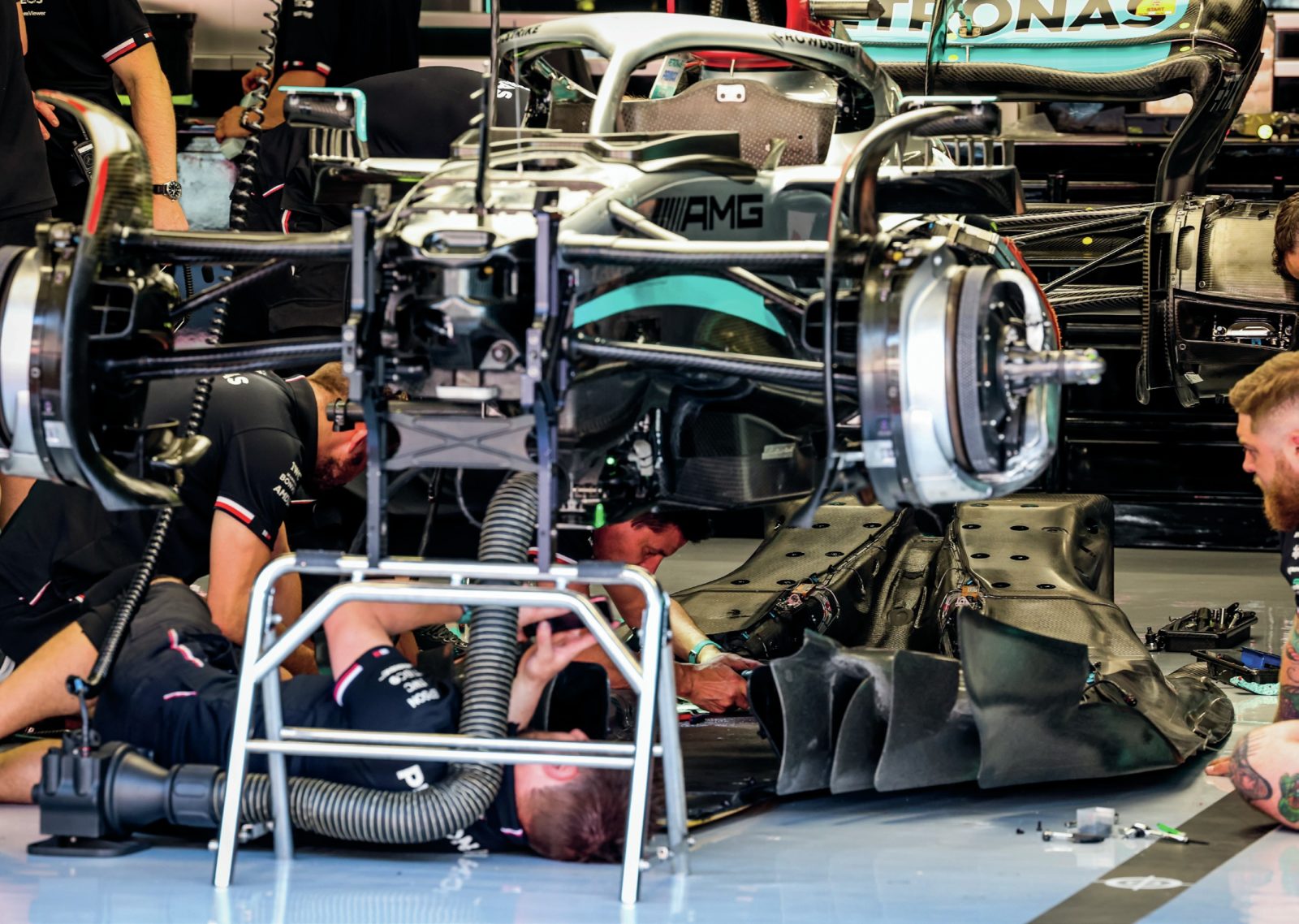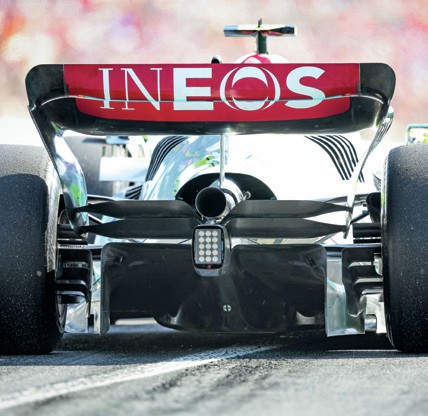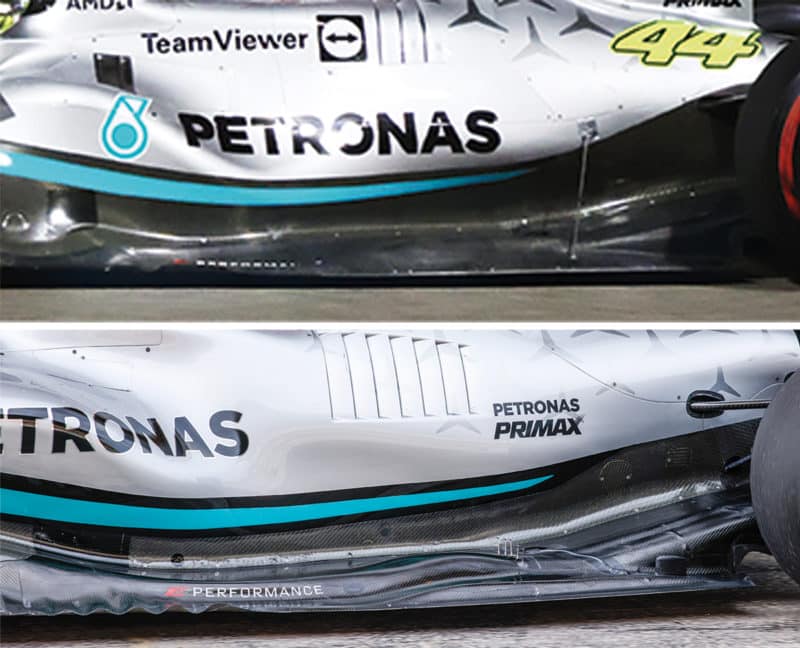The changes that have given bouncing Mercedes a smoother ride
Although Mercedes hasn’t cured its porpoising issues, floor adjustments are reducing the bouncing, says Mark Hughes

Images from Barcelona show an increase in the tunnel height in the exposed upper part of the floor
The ongoing saga of Mercedes’ 2022 difficulties received its first positive upturn in Barcelona. The introduction of a new floor largely banished the car’s previous porpoising-induced limitation.
That still didn’t put it quite on Red Bull or Ferrari performance levels, but provided a very solid foundation for the team to build upon. No longer was setting up the car only about increasing the rear ride height (surrendering a lot of downforce in the process) until the bouncing was under control. With the operating window of the underfloor so much wider than before, inset, the ride height could be run much more closely to its design ideal.
Although very restrictive in some areas, the 2022 technical regulations allow for a lot of freedom of the underfloor design. The position of the downforce-creating venturi tunnels on each side are prescribed relative to the front and rear axle lines and to the flat central keel. The expansion ramp at the back of the tunnels is similarly placed in space, but the geometry of the tunnels themselves is pretty much free.
Various on-track incidents and the subsequent craning of cars, together with the physical moving around of car floors in garages, have allowed glimpses of some of the designs. The original pre-Spanish GP Mercedes floor appeared to have tunnels with a much lower ceiling than those of the Red Bull. A lowerroofed tunnel will in theory produce more downforce as the air is forced to accelerate harder as it squeezes between the road and the smaller gap. It is the low pressure– relative to the ambient air pressure on the car’s upper surfaces, created by the fastmoving air in the tunnels, which creates the downforce.

However, if the tunnel is too restrictive, the airflow can stall as the air speed increases. Imagine a water bucket not with an open top but instead a narrow slot through which to fill it. Pour in the water too fast and the slot would reach its capacity and the excess water would spill out the sides. When that happens with the airflow through a tunnel which is too restrictive, the downforce is reduced, the back of the car rises and the whole porpoising sequence begins.
The expansion ramp at the back of the tunnel plays an important role in this. Because it increases in volume along its length, it tries to create a vacuum which the air rushes to fill. The beginning of the expansion ramp is where the air pressure is at its lowest before gradually returning to ambient pressure along its length. The sharper the angle of the ramp, the harder the air will be pulled through – up to a point. The harder it is pulled through here, the less stall-prone the forward part of the tunnel should be.
“It was a proper racing car. We could set it up and tune it”
So there are two potential stall points. It’s all further complicated by the dynamics of the car. Low ride heights can be simulated but not the ‘aerodynamic hysteresis’ which inevitably occurs in the real world – the to-ing and fro-ing of the various flows through the floor and how they interact with one another at different speeds, roll and pitch angles, etc.
The evidence from the exposed upper part of the new Mercedes floor in Barcelona suggests the tunnel now has a higher ceiling and a slightly increased angle expansion ramp. The higher ceiling would make the downforce less sensitive to ride height, the sharper expansion ramp would help pull the air through even with the ride height at its most restrictive.
Both Lewis Hamilton and George Russell reported a huge improvement in the car’s behaviour. “It’s the first time we’ve driven down the straight without bouncing,” reported Hamilton. “We still have some bouncing but it’s way better.”

Changes apparent from the upper edge of the floor imply crucial changes to the shape of the venturi tunnels beneath. Top is pre-Barcelona in contrast to the Barcelona floor beneath
“The car is definitely reacting differently to before,” added Russell.
James Vowles, Mercedes’ chief strategist, commented: “It was a car that really was a proper racing car for once. We could set it up, we could tune it, we could play around with the settings and it would respond in a way that was predictable…
“It would be wrong to say the porpoising issue has disappeared. I am sure there will be elements of it coming back again as we build on our understanding and the foundations we laid down in Barcelona. But we made a definitive step in our understanding and deployment of what we put on track. We can build on that.”

